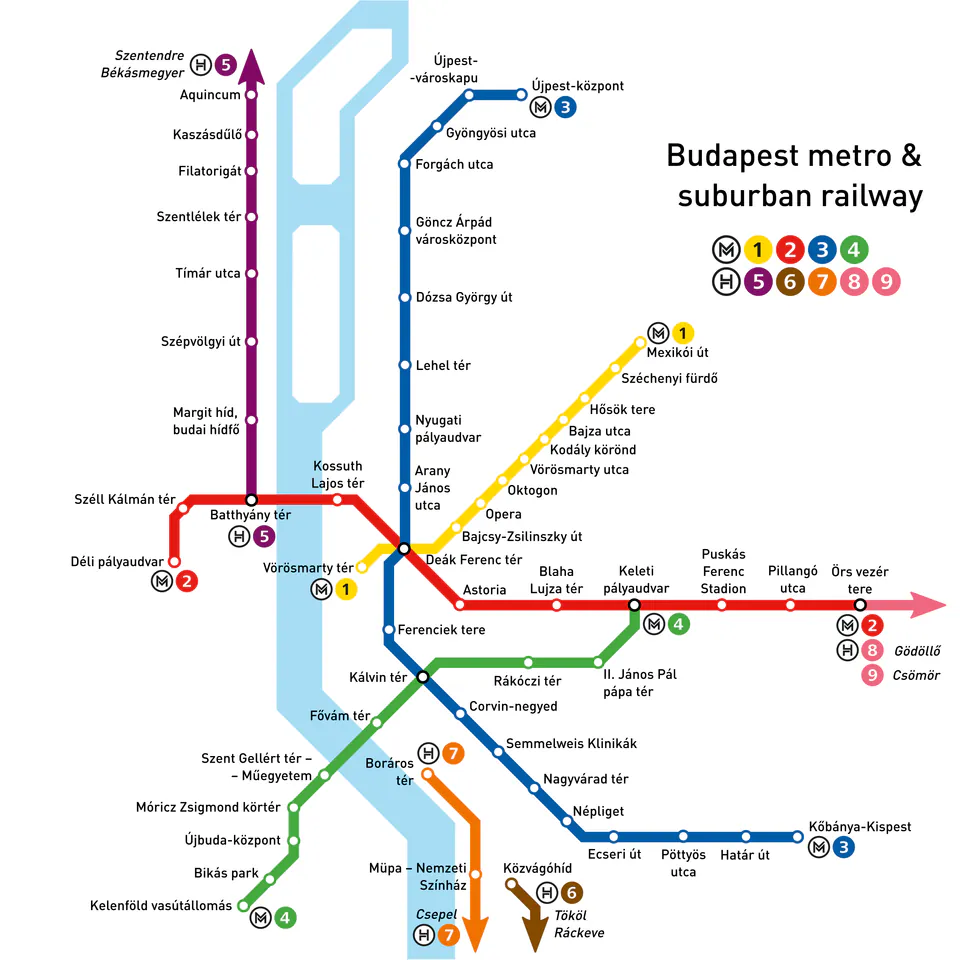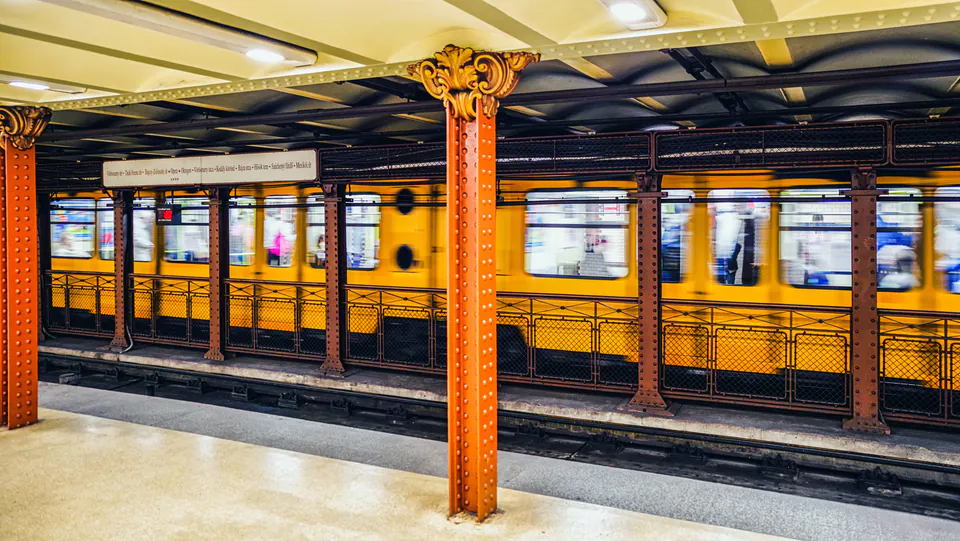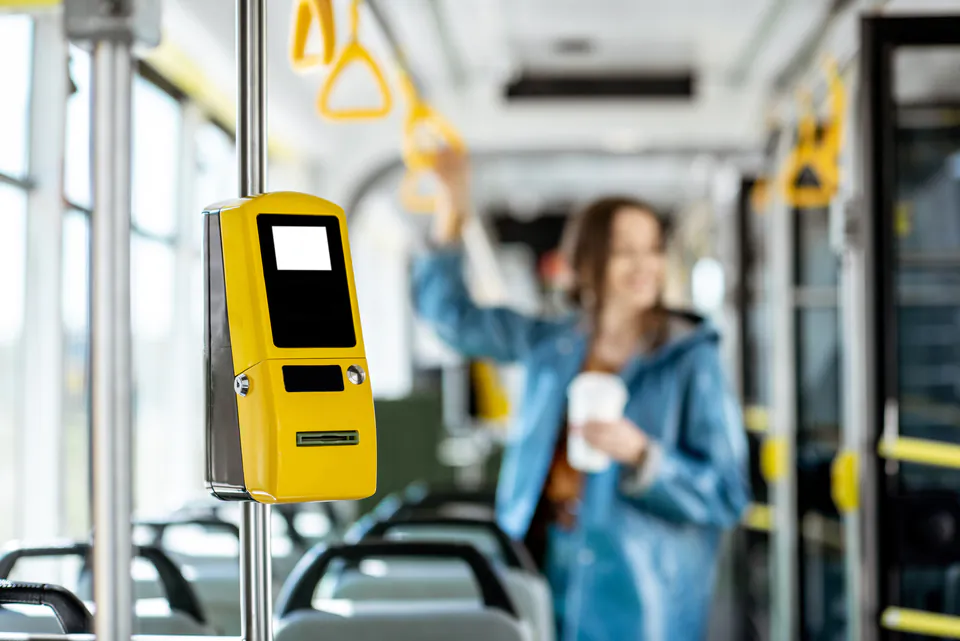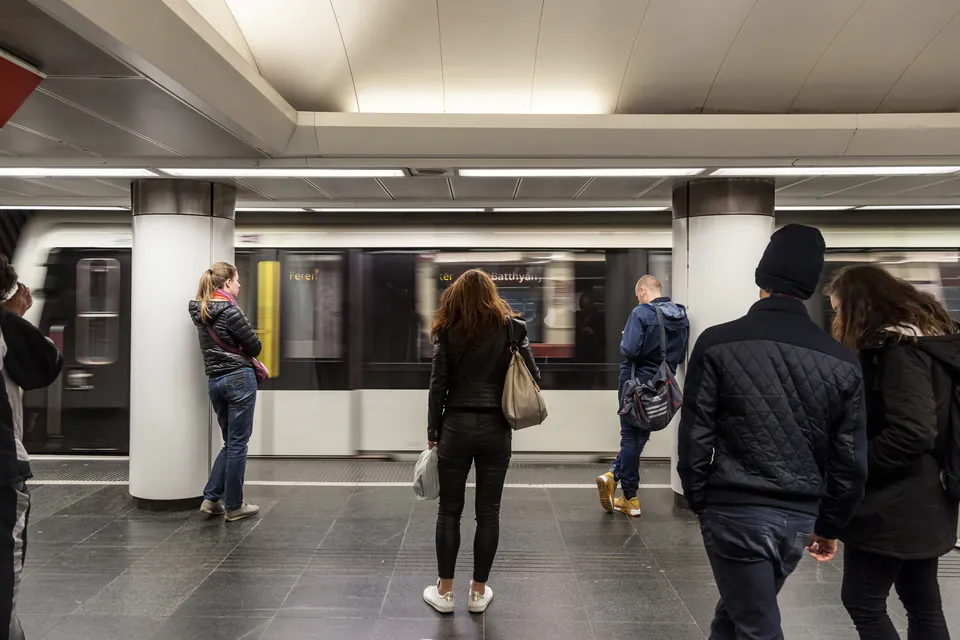Budapest Metro System: Lines, Tickets, and Practical Travel Advice
Getting around Budapest using the metro is pretty amazing when you think about it. This is the second-oldest underground train system in the world. We always tell people it's one of the best ways to see the city, and after using it dozens of times, we can say it really works. You can get to thermal baths, Castle District, or the Jewish Quarter without any hassle.

There are four different colored lines that cross each other at important spots around the city. BKK runs everything. Trains start at 4:30 AM and keep going until 11:00 PM every day. During busy times you won't wait more than five minutes, which is pretty good.
The Four Metro Lines You Need to Know
Budapest has four metro lines and each one goes to different parts of the city. The colors make it super easy to figure out where you're going. We learned this pretty quickly on our first trip.

M1 Yellow Line - The Old One
The M1 Yellow Line is really special. It's the oldest underground train in continental Europe and UNESCO thinks it's important enough to protect. It goes under Andrássy Avenue from Vörösmarty tér in the center all the way to Mexikói út.
You can get to some great places on this line. There's the Opera House at Opera station, Heroes' Square and City Park at Hősök tere, and those famous Széchenyi Thermal Baths at Széchenyi fürdő. The stations look incredible too. We spent way too much time just looking at the old decorations from the 1800s.

M2 Red Line - Goes Across the City
The M2 Red Line runs east to west. It connects Déli pályaudvar (that's the Southern Railway Station) in Buda with Örs vezér tere in Pest. This was the first line to go under the Danube River, so it's pretty important if you want to get between both sides.
Some key stops are Kossuth Lajos tér for the Parliament Building, Batthyány tér if you want to see Fisherman's Bastion, Astoria near the Great Synagogue, and Keleti pályaudvar (Eastern Railway Station). You can change to other lines at Deák Ferenc tér and Keleti pályaudvar.
M3 Blue Line - North to South
The M3 Blue Line goes north to south on the Pest side. It starts at Kőbánya-Kispest in the south and ends at Újpest-központ up north. Lots of people who live in Budapest use this line every day. Also, if you're coming from the airport, you'll probably use this line because the 200E bus stops at Kőbánya-Kispest.
Important stops include Nyugati pályaudvar (Western Railway Station) and you can change lines at Deák Ferenc tér and Kálvin tér. They fixed up the whole Blue Line recently to make it work better for people in wheelchairs.
M4 Green Line - The New One
The M4 Green Line opened in 2014, so it's the newest. It goes from Kelenföld vasútállomás in Buda to Keleti pályaudvar in Pest, and it actually goes under the Danube River. The stations look really modern and won some awards.
Good stations to know about are Szent Gellért tér near the Gellért Thermal Baths, Fővám tér for the Great Market Hall, and you can change lines at Kálvin tér and Keleti pályaudvar. The whole Green Line works for wheelchairs, which is great.

Budapest Metro Lines Overview
| Line | Color | Route | Key Attractions |
|---|---|---|---|
| M1 | Yellow | Vörösmarty tér – Mexikói út | Opera House, Heroes' Square, Széchenyi Baths |
| M2 | Red | Déli pályaudvar – Örs vezér tere | Parliament, Fisherman's Bastion, Great Synagogue |
| M3 | Blue | Kőbánya-Kispest – Újpest-központ | Western Railway Station, Airport connection |
| M4 | Green | Kelenföld – Keleti pályaudvar | Gellért Baths, Great Market Hall |
How Much Tickets Cost
Budapest uses the same tickets for everything, metro, buses, trams. There are tons of different options depending on how long you're staying and how much you plan to travel around.
Single Trip Tickets
One ticket costs HUF 450 and you can use it for one trip on any metro line. You can even change between metro lines if you do it within 80 minutes of when you first used the ticket. This works great if you need to switch lines to get where you're going. If you buy 10 tickets at once, it costs HUF 4,000, which saves you a bit of money.

Time Tickets
If you're planning to take a few different buses or trams, time tickets work better. You can get unlimited transfers for 30 minutes (HUF 530) or 90 minutes (HUF 750). We usually go for the 90-minute one because you never know if you'll want to stop somewhere along the way.
Tourist Passes
The 24-hour pass costs HUF 2,500 and the 72-hour pass is HUF 5,500. These let you use almost everything BKK runs in Budapest. The only thing you can't use is the 100E Airport Express. We always recommend these if you're going to be doing a lot of sightseeing.
If you're staying for a month, the monthly pass costs HUF 8,950. Students from EU countries can get cheaper tickets if they have a valid student ID. There's also something called the Budapest Card that includes transport plus discounts at museums and attractions.
Where to Buy Tickets
You can buy tickets lots of places. The purple machines at metro stations take cash and cards, and you can change the language to English. We love using the BudapestGO app on our phones because you can buy and use tickets right from the app.
There are BKK Customer Service offices at big stations if you need help from a person. You can also get tickets at newsstands and post offices. Some buses sell tickets too, but they cost more than if you buy them ahead of time.
How to Use the Metro
Using Budapest's metro is pretty straightforward, but there are a few things you need to know. The whole system works on trust, but they do random checks, so you really need to have a valid ticket.
Using Your Ticket
Paper tickets need to be put in those orange or yellow machines before you go into the metro area. Stick the whole ticket in, wait for the beep, then grab it back right away. If you bought a mobile ticket on the BudapestGO app, you scan the QR code before you get on.
If you have a day pass or longer pass, you don't need to validate it each time, but keep it with you because inspectors check randomly. We learned the hard way that traveling without a valid ticket gets you a HUF 12,000 fine on the spot, or HUF 25,000 if you pay later.

Finding Your Way Around
Metro stations have signs in Hungarian and English, and each line has its own color everywhere you look. The electronic signs on platforms and inside trains show what stops are coming up. Most announcements are in Hungarian, but you can usually figure out the important stuff.
Deák Ferenc tér is where M1, M2, and M3 all meet. When we first visited, we got a bit lost trying to change lines there because you have to walk through underground tunnels, but the signs help a lot. The BudapestGO app shows when trains are coming and can help you plan your route.
When Trains Run and How Often
Metro runs every day from about 4:30 AM until 11:00 PM. The times are a little different for each line. During busy times (8:00-9:00 AM and 5:30-7:00 PM) trains come every 2-5 minutes. Early morning and late at night, you might wait 10-15 minutes.
After the metro stops, there are lots of night buses that keep running. Trams 4 and 6 run 24 hours along the Grand Boulevard, which is really helpful if you're out late.
Getting Around if You Have Mobility Issues
BKK is working hard to make the metro better for people who use wheelchairs, but some lines are better than others because they were built at different times.
The M1 Yellow Line can't be made wheelchair accessible because it's a UNESCO heritage site and they can't change the historic construction. The M2 Red Line has step-free access at some stations like Örs vezér tere, Pillangó utca, and Puskás Ferenc Stadion.

The M3 Blue Line got completely rebuilt and now has elevators and inclined lifts at every station. The M4 Green Line is the best with elevators everywhere, though sometimes you need to use two different elevators to get where you're going.
All metro trains have special spots for wheelchairs with clear pictures on the doors. The BudapestGO app tells you in real time which buses and trams have low floors, which helps people plan their trips better.
Getting to and from the Airport
The metro doesn't go directly to Budapest Ferenc Liszt International Airport, but it's still pretty easy to get to the city center using public transport.
The 100E Airport Express Bus goes straight from the airport to important places in the city center like Deák Ferenc tér, Astoria, and Kálvin tér. This costs more than regular public transport and you can't use normal BKK passes. The trip takes 30-60 minutes depending on traffic.
If you want to save money, take Bus 200E from the airport to Kőbánya-Kispest, which is the end of Metro Line M3. Regular BKK tickets work for this route, and the whole trip to downtown takes about 45-60 minutes including the metro part.

Tips That Actually Help
Getting the most out of the metro means knowing when to avoid the crowds and how things work. Rush hour gets crazy busy, especially on weekdays between 8:00-9:00 AM and 5:30-7:00 PM. We always try to travel outside these times, especially if we have suitcases with us.
Stay safe like you would in any big city. Keep your stuff secure and pay attention to what's happening around you, especially when it's crowded. Some people feel less safe on the M3 line, so just be extra careful there.
There are some basic rules that make everyone's trip better. Stand on the right side of escalators so people can walk past on the left. Give your seat to elderly people, pregnant women, and people with disabilities. Let people get off the train before you get on, and take your backpack off in crowded trains so there's more room.
Ticket inspectors wear purple armbands and have official ID. They check tickets randomly throughout the system, so always have your validated ticket or pass ready. If you're not sure if someone is really an inspector, you can ask to see their ID.

Apps and Websites You Should Know About
The BudapestGO mobile app is really useful for metro travel. You can plan trips, see when trains are coming in real time, and buy tickets on your phone. The app works with NFC so you can validate tickets with one tap, and it tells you about service problems.
The official BKK website (bkk.hu/en/) has everything you need to know about routes, schedules, ticket prices, and when things change. The English version works well for tourists, and the FAQ section answers most questions pretty quickly.
If you need help right away, BKK has a phone number (+36 1 3 255 255) and email (bkk@bkk.hu). Their social media accounts give real-time updates about service changes and problems.
What's New and What's Coming
Budapest's metro keeps changing to handle more people and work better. Recently they've been talking about keeping the metro open longer on weekends and adding more 24-hour bus routes.
They're adding "metro bus" routes to connect outer neighborhoods with metro lines better, making trips faster and more direct. The M3 line is still getting renovations, which might cause temporary service changes, so check for current problems before you travel.
Changes to ticket options and connections with the MOL Bubi bike-sharing service show that Budapest's public transport keeps evolving. Always check the official BKK website for the latest information about service changes and new features.